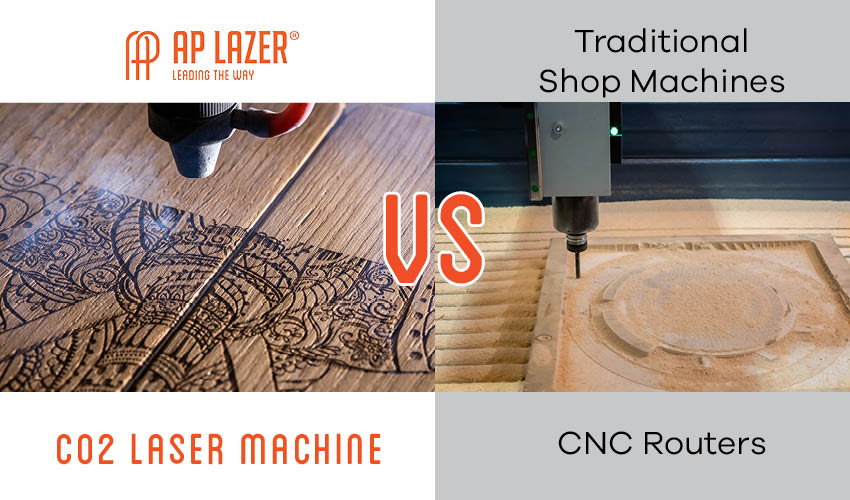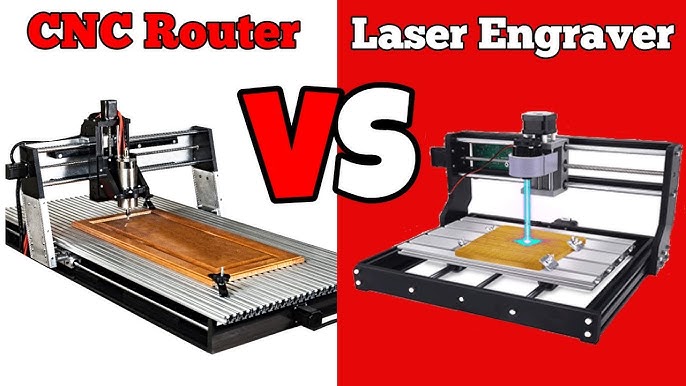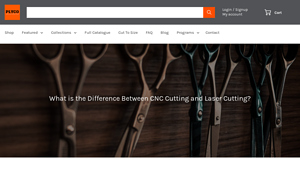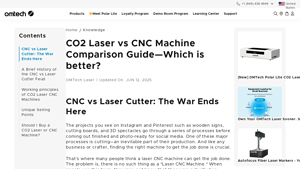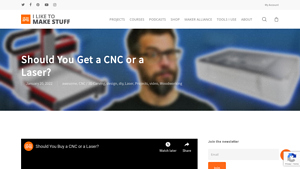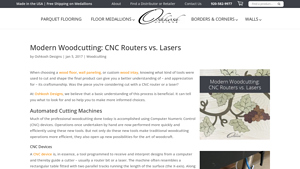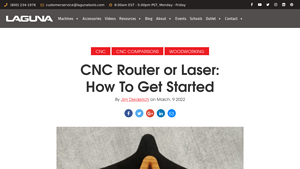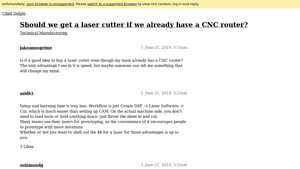Laser Vs Cnc Guide: Type, Cost, Top List…
Introduction: Navigating the Global Market for laser vs cnc
When sourcing cutting-edge solutions for precision manufacturing, understanding the nuances between laser and CNC technologies is essential for international B2B buyers. As businesses navigate the complexities of global markets, particularly in regions like Africa, South America, the Middle East, and Europe, the choice between laser cutting and CNC machining can significantly impact production efficiency, cost management, and product quality. This guide delves into the intricacies of both technologies, examining their various types and applications, aiding in supplier vetting, and providing insights into cost implications.
Laser cutting offers unparalleled precision and detail, making it ideal for intricate designs and materials that require a clean finish. Conversely, CNC machining excels in handling thicker materials and creating multi-dimensional objects, ensuring versatility across a broader range of applications. By exploring the strengths and limitations of each method, this guide empowers buyers to make informed purchasing decisions that align with their operational needs and market demands.
Additionally, we address key considerations such as material compatibility, production scalability, and the environmental implications of each technology. Armed with this comprehensive understanding, B2B buyers can confidently select the most suitable cutting solution, ultimately enhancing their competitive edge in the global marketplace.
Understanding laser vs cnc Types and Variations
| Type Name | Key Distinguishing Features | Primary B2B Applications | Brief Pros & Cons for Buyers |
|---|---|---|---|
| Laser Cutting | Uses focused light to cut materials; produces clean edges with burn marks | Signage, intricate designs, jewelry | Pros: High precision, minimal waste. Cons: Limited to thinner materials, potential discoloration. |
| CNC Milling | Utilizes rotating cutting tools for material removal; offers depth control | Furniture, 3D carvings, prototypes | Pros: Handles thicker materials, no discoloration. Cons: More waste, requires more setup time. |
| Laser Engraving | Burns material to create designs; excellent for detailed work | Custom gifts, awards, promotional items | Pros: High detail, versatile material options. Cons: Limited depth, potential for burn marks. |
| CNC Router | Similar to milling but often more versatile; can handle varied materials | Complex shapes, cabinetry, signage | Pros: Great for intricate designs, can work with multiple materials. Cons: Slower than laser cutting. |
| Hybrid Systems | Combines laser and CNC functionalities; adaptable for various tasks | Custom manufacturing, prototyping | Pros: Versatile, capable of diverse applications. Cons: Higher initial investment, complexity in operation. |
What are the Characteristics of Laser Cutting?
Laser cutting is characterized by its use of focused light to precisely cut materials. This method is particularly effective for creating intricate designs, making it ideal for applications such as signage and jewelry. One of the main advantages for B2B buyers is its high precision and minimal waste, allowing for cost-effective production. However, it is limited to thinner materials and may result in discoloration around the cut edges, which can affect the aesthetic appeal of the finished product.
Why Choose CNC Milling for Your Business?
CNC milling involves the use of rotating cutting tools to remove material, allowing for greater control over depth and the ability to work with thicker materials. This makes it suitable for applications like furniture production and 3D carvings. For businesses, the key benefits include no discoloration of edges and the capability to create true three-dimensional objects. On the downside, CNC milling often produces more waste and requires more setup time, which can impact efficiency.
How Does Laser Engraving Stand Out?
Laser engraving is distinct for its ability to burn designs into materials, offering high levels of detail and versatility across various substrates. This technique is commonly used for custom gifts and promotional items. The main advantages include the ability to produce intricate designs with high precision. However, it is limited in depth and may leave burn marks, which could be a consideration for businesses focused on aesthetics.
What Makes CNC Routers a Good Investment?
CNC routers are similar to milling machines but offer a broader range of applications, including the capability to handle complex shapes and various materials. They are particularly effective for cabinetry and signage. For B2B buyers, the advantages include the ability to create intricate designs without the risk of discoloration. However, CNC routers may operate slower than laser systems, which could affect turnaround times for projects.
Why Consider Hybrid Systems for Versatile Manufacturing?
Hybrid systems that combine both laser and CNC technologies offer businesses the flexibility to tackle a wide range of applications, from custom manufacturing to prototyping. The primary advantage of such systems is their versatility, enabling users to switch between cutting and engraving tasks seamlessly. However, these systems typically require a higher initial investment and can introduce complexity in operation, making it essential for buyers to assess their specific needs and capabilities before purchasing.
Key Industrial Applications of laser vs cnc
| Industry/Sector | Specific Application of laser vs cnc | Value/Benefit for the Business | Key Sourcing Considerations for this Application |
|---|---|---|---|
| Manufacturing | Precision cutting of metal parts | High accuracy and reduced waste, enabling cost-effective production | Machine size, cutting speed, and material compatibility |
| Signage & Advertising | Custom signage and branding elements | Enhanced design flexibility and rapid prototyping capabilities | Material options, engraving depth, and finish quality |
| Furniture Design | Intricate furniture components and designs | Ability to create complex shapes and reduce time-to-market | Material thickness, edge finish quality, and machine capabilities |
| Jewelry & Fashion | Detailed engraving and cutting of jewelry pieces | Precision craftsmanship and unique designs | Material type, cutting speed, and detail resolution |
| Aerospace & Defense | Fabrication of lightweight components | High precision and weight reduction, crucial for performance | Compliance with industry standards and material specifications |
How is Laser vs CNC Used in Manufacturing?
In the manufacturing sector, laser cutting is often utilized for precision cutting of metal parts, where high accuracy is essential. CNC machining, on the other hand, excels in producing complex geometries from various materials. The primary problem solved is the need for high-quality parts with minimal waste, which is critical in competitive environments. Buyers must consider the machine’s size, cutting speed, and compatibility with different materials to ensure optimal production efficiency.
What Applications Exist for Signage & Advertising?
For signage and advertising, lasers are preferred for engraving intricate designs and logos on various materials, while CNC machines are better suited for creating custom shapes from thicker substrates. This application addresses the demand for personalized branding and quick turnaround times. International buyers should evaluate material options, desired engraving depth, and finish quality to align with local market preferences and regulations.
How is Laser vs CNC Beneficial in Furniture Design?
In furniture design, CNC technology allows for the creation of intricate components and unique designs that can be challenging to achieve with traditional methods. Laser cutting can provide clean edges and complex patterns. The main challenge is balancing aesthetic appeal with structural integrity. Buyers should focus on the thickness of materials, edge finish quality, and the specific capabilities of the machines to meet their design needs effectively.
What is the Role of Laser vs CNC in Jewelry & Fashion?
In the jewelry and fashion industry, laser cutting and engraving provide the precision needed for intricate designs and small components. Laser technology allows for detailed work on lightweight materials, while CNC is used for more robust pieces. The significant challenge is ensuring precision without compromising the material’s integrity. Buyers need to consider the types of materials they will work with, the cutting speed, and the level of detail required for their designs.
How Do Aerospace & Defense Benefit from Laser vs CNC Technologies?
In aerospace and defense, both laser and CNC technologies are employed for fabricating lightweight components that require high precision. Lasers offer the advantage of cutting thin materials with minimal thermal distortion, while CNC machining is ideal for creating complex parts from robust materials. The critical issue addressed is the necessity for stringent compliance with industry standards. Buyers in this sector must ensure that their sourcing aligns with specific material specifications and regulatory requirements to maintain safety and performance standards.
3 Common User Pain Points for ‘laser vs cnc’ & Their Solutions
Scenario 1: Choosing the Right Technology for Specific Materials
The Problem: A manufacturing company in Brazil faces a dilemma when deciding between laser cutting and CNC machining for their new product line. They need to work with both thin acrylic sheets and thicker wood panels. The challenge arises from the differing properties of these materials and the capabilities of each technology. They worry that choosing the wrong method could lead to production delays, increased costs, and subpar product quality.
The Solution: To effectively address this challenge, the company should conduct a thorough material analysis prior to making a decision. They need to evaluate the thickness and type of materials they will primarily use. For thinner materials like acrylic, laser cutting is advantageous due to its precision and clean edges, which is crucial for aesthetic products. Conversely, for thicker wood panels, CNC machining should be the preferred method, as it offers greater control over depth and avoids the burn marks associated with laser cutting. Companies should also consider investing in dual-technology capabilities if their budget allows. This can enhance flexibility and allow for optimized production processes for varying materials.
Scenario 2: Managing Production Costs and Waste
The Problem: A furniture manufacturer in Saudi Arabia is experiencing rising production costs due to high material waste when using CNC machines. The company struggles with the significant amount of shavings and offcuts generated during the cutting process, leading to both environmental concerns and increased disposal costs. They are looking for a way to minimize waste without compromising on the quality of their finished products.
The Solution: Transitioning to laser cutting technology for certain projects can significantly reduce material waste. Lasers operate with a narrower cutting width compared to CNC routers, leading to less excess material being removed. The manufacturer should analyze their design workflow and identify products that could benefit from laser cutting, particularly those with intricate designs that require high precision. Additionally, implementing a digital inventory management system can help track materials more efficiently, allowing the company to optimize their material usage and reduce waste further. Collaborating with suppliers who offer eco-friendly materials can also enhance their sustainability efforts.
Scenario 3: Ensuring Consistent Quality Across Different Production Runs
The Problem: A promotional products business in South Africa is facing quality control issues with their engraved items. The inconsistency in engraving depth and clarity has led to customer complaints and returns. They are unsure whether the problem stems from their CNC machines or if they should switch to laser engraving to ensure uniform quality.
The Solution: To resolve this issue, the business should first conduct a comprehensive evaluation of their current CNC setup, including tooling, feed rates, and machine calibration. They can implement a regular maintenance schedule and invest in higher-quality bits that provide better edge finishes. Additionally, they should consider a hybrid approach by incorporating laser engraving for projects requiring high detail and uniformity. This could enhance the overall quality of their products, particularly for intricate designs. Training their operators on best practices for both CNC and laser machinery will further ensure that quality standards are consistently met. Regular quality checks and customer feedback loops can also help refine their processes and address any emerging issues promptly.
Strategic Material Selection Guide for laser vs cnc
What Are the Key Properties of Wood for Laser and CNC Applications?
Wood is a popular material for both laser cutting and CNC machining due to its versatility and availability. It is characterized by its natural grain patterns, which can enhance aesthetic appeal. However, its thermal properties are crucial: wood can burn when exposed to high temperatures, making it more suitable for laser cutting in thin layers. For CNC applications, wood allows for intricate designs without the risk of burning, provided that the right feed rates and cutting bits are used.
Pros & Cons: Laser cutting offers precision and minimal waste, making it ideal for detailed designs. However, it may leave burn marks along edges, which can detract from the visual quality. CNC machining, on the other hand, allows for deeper cuts and three-dimensional shapes without discoloration, but it may produce more waste and requires careful handling to avoid damaging the material.
Impact on Application: Wood is compatible with a range of applications, from furniture to decorative items. However, international buyers should consider the type of wood used, as different species have varying hardness and grain patterns that can affect the cutting process.
Considerations for International Buyers: Compliance with local regulations regarding sustainable forestry practices is essential, especially in regions like Europe where environmental standards are stringent. Buyers should also be aware of the specific wood types that are favored in their local markets, which may influence material costs and availability.
How Do Plastics Perform in Laser and CNC Applications?
Plastics, including acrylic and polycarbonate, are increasingly used in both laser and CNC applications. They are lightweight, easy to manipulate, and can be engineered for specific properties such as UV resistance and impact strength.
Pros & Cons: Laser cutting of plastics is advantageous due to the clean edges and intricate designs achievable without physical contact. However, certain plastics can release harmful fumes when cut with lasers, necessitating proper ventilation systems. CNC machining allows for a broader range of thicknesses and material types but can lead to rough edges and requires more post-processing.
Impact on Application: Plastics are commonly used in signage, packaging, and decorative items. The choice of plastic can significantly affect the end product’s durability and aesthetic appeal.
Considerations for International Buyers: Buyers should ensure that the plastics they choose comply with local safety and environmental standards, such as REACH in Europe. Additionally, understanding the local market’s preferences for specific plastic types can aid in making informed purchasing decisions.
What Are the Considerations for Metals in Laser vs. CNC Machining?
Metals like aluminum and stainless steel are frequently used in industrial applications, offering high strength and durability. The choice between laser cutting and CNC machining often depends on the metal’s thickness and the desired finish.
Pros & Cons: Laser cutting provides precise cuts and can handle intricate designs, but it is typically limited to thinner metals. CNC machining excels with thicker materials and can achieve complex shapes, but it may produce more waste and require additional finishing processes.
Impact on Application: Metals are widely used in automotive, aerospace, and manufacturing sectors. The choice of cutting method can significantly impact production efficiency and end-product quality.
Considerations for International Buyers: Buyers should be aware of international standards for metal quality and safety, such as ASTM and ISO certifications. Additionally, understanding the local supply chain for metal materials can influence cost and availability.
Summary Table of Material Selection for Laser vs. CNC
| Material | Typical Use Case for laser vs cnc | Key Advantage | Key Disadvantage/Limitation | Relative Cost (Low/Med/High) |
|---|---|---|---|---|
| Wood | Furniture, decorative items | Minimal waste and high precision | Potential burn marks from laser cutting | Medium |
| Plastics | Signage, packaging, decorative items | Clean edges and intricate designs | Harmful fumes from certain plastics | Medium |
| Metals | Automotive, aerospace components | High strength and durability | Limited thickness for laser cutting | High |
This guide provides actionable insights for B2B buyers, helping them make informed decisions based on material properties, application suitability, and compliance considerations in their respective regions.
In-depth Look: Manufacturing Processes and Quality Assurance for laser vs cnc
What Are the Main Stages of Manufacturing for Laser and CNC Processes?
When considering laser cutting and CNC machining for manufacturing, understanding the stages involved is crucial for B2B buyers. Each process has unique characteristics that can influence the efficiency, cost, and quality of the final product.
Material Preparation: How Are Materials Selected and Prepared?
For both laser and CNC processes, material selection is fundamental. Common materials include metals, plastics, wood, and composites, but each process has preferences. Lasers excel with thinner materials like acrylic and wood, while CNC is better suited for thicker, denser materials such as metals or plywood.
The preparation stage involves sourcing high-quality raw materials and ensuring they meet the necessary specifications. Suppliers should provide material certifications that comply with international standards. For example, metals may need to adhere to ASTM or ISO standards, while plastics might require compliance with FDA regulations.
Forming: What Techniques Are Used in Laser Cutting vs. CNC Machining?
The forming stage varies significantly between laser cutting and CNC machining.
-
Laser Cutting: The laser focuses a high-intensity beam on the material, heating it until it melts or vaporizes. This process allows for intricate designs and high precision, with the ability to cut or engrave complex patterns. Laser systems can operate at high speeds, minimizing production time.
-
CNC Machining: This process utilizes a rotating cutter to remove material through a subtractive method. CNC machines can create detailed shapes and accommodate various depths, making them ideal for three-dimensional objects. The programming involved is intricate, requiring precise feed rates and tool paths to ensure accuracy.
Both methods require skilled operators who can manage the equipment and troubleshoot issues as they arise.
Assembly: How Is the Assembly Process Handled?
The assembly stage typically follows the forming process and can vary based on the complexity of the project. For laser-cut components, assembly can be straightforward due to the precision of cuts, allowing for snug interlocking pieces. CNC components, however, may require additional finishing processes to ensure smooth edges and surfaces.
In some cases, secondary operations such as welding, riveting, or adhesive bonding are necessary, particularly when combining parts made from different materials. Buyers should inquire about the assembly capabilities of their suppliers, especially if the project involves multiple components or complex assemblies.
Finishing: What Are the Key Finishing Techniques?
Finishing processes enhance the aesthetic and functional qualities of the products. Common finishing techniques include:
-
Laser Cutting: Typically leaves a clean edge, but may require post-processing to remove burn marks or discoloration. Finishing options like sanding or polishing can further enhance the surface quality.
-
CNC Machining: Often requires additional finishing to smooth out any tool marks left by the cutting bits. Techniques such as bead blasting, anodizing, or painting may be employed to achieve the desired surface finish.
B2B buyers should discuss finishing requirements with their suppliers to ensure that the final product meets their specifications.
What Quality Assurance Measures Are Essential for Laser and CNC Manufacturing?
Quality assurance (QA) is paramount in manufacturing, particularly for B2B transactions where product reliability is critical. Both laser and CNC processes have specific QA measures that should be adhered to.
What International Standards Should Buyers Be Aware Of?
Adhering to international quality standards is essential for maintaining product integrity. ISO 9001 is a widely recognized standard that outlines requirements for quality management systems. Suppliers should be certified to this standard to demonstrate their commitment to quality.
Additionally, industry-specific certifications may be relevant. For instance, products intended for the medical or aerospace industries may require compliance with FDA or AS9100 standards, respectively. B2B buyers should verify that their suppliers hold the necessary certifications for their specific industry.
What Are the Key Quality Control Checkpoints?
Quality control (QC) checkpoints are critical throughout the manufacturing process. Key checkpoints include:
-
Incoming Quality Control (IQC): Inspecting materials upon arrival to ensure they meet specified standards before production begins.
-
In-Process Quality Control (IPQC): Monitoring the production process to identify any deviations from standards. This includes regular checks during laser cutting or CNC machining to ensure dimensional accuracy.
-
Final Quality Control (FQC): Conducting a comprehensive inspection of the finished product before shipment. This may involve dimensional checks, visual inspections, and functional testing.
B2B buyers should insist on receiving detailed QC reports that document these checkpoints.
How Can Buyers Verify Supplier Quality Control Practices?
To ensure that suppliers maintain rigorous QC practices, buyers can take several steps:
-
Audits: Conducting on-site audits of the supplier’s facilities allows buyers to assess their quality management systems and manufacturing capabilities directly.
-
Reports: Requesting regular QC reports that detail inspection results, non-conformances, and corrective actions taken can provide insight into the supplier’s commitment to quality.
-
Third-Party Inspections: Engaging independent inspection agencies can add an extra layer of assurance, especially for high-value or critical components. These agencies can provide unbiased evaluations of the supplier’s processes and products.
What Are the QC Nuances for International Buyers?
International buyers, particularly from regions like Africa, South America, the Middle East, and Europe, should be aware of additional nuances in QC practices. Different countries may have varying standards and regulations, making it essential to understand local compliance requirements.
Buyers should also consider the logistics of shipping and the potential for damage during transit. Ensuring that suppliers use robust packaging and handling practices can mitigate risks associated with international shipping.
Conclusion: Making Informed Decisions for Laser vs. CNC Manufacturing
For B2B buyers, understanding the manufacturing processes and quality assurance practices for laser and CNC techniques is essential for making informed decisions. By evaluating the entire manufacturing lifecycle—from material preparation to finishing—and emphasizing rigorous QC measures, buyers can ensure they select suppliers who meet their quality standards and production needs. This comprehensive approach will ultimately lead to successful partnerships and high-quality products that meet market demands.
Practical Sourcing Guide: A Step-by-Step Checklist for ‘laser vs cnc’
When considering the procurement of laser or CNC technology, international B2B buyers must navigate a complex landscape of options and specifications. This guide provides a step-by-step checklist to help you make informed decisions that align with your business needs and production capabilities.
Step 1: Define Your Technical Specifications
Understanding your project requirements is crucial before engaging suppliers. Consider the types of materials you will work with, desired precision, and the thickness of the materials. For instance, laser cutters excel at intricate designs on thin materials, while CNC machines are better for thicker substrates and detailed depth control.
Step 2: Assess Your Production Volume Needs
Evaluate the scale of your operations to determine the appropriate equipment. If you require high-volume production, CNC machines may offer faster processing times for bulk items. Conversely, for lower volume but high-detail projects, a laser cutter could be more suitable. Understanding your production scale will help align your investment with expected returns.
Step 3: Evaluate Potential Suppliers
Before committing, it’s essential to vet suppliers thoroughly. Request company profiles, case studies, and references from buyers in similar industries or regions. Look for suppliers who specialize in laser or CNC technology and have a proven track record. Verify their experience with your specific materials and applications.
Step 4: Examine Technical Support and Training
Support from suppliers can significantly impact your operational efficiency. Assess whether the supplier offers comprehensive training on machine operation and maintenance. Additionally, inquire about their technical support services, including response times and availability of spare parts. This ensures your team can effectively utilize the equipment and minimize downtime.
Step 5: Review Warranty and Service Agreements
A robust warranty and service agreement can provide peace of mind and protect your investment. Check the terms of the warranty, including duration and coverage specifics. Evaluate service agreements for regular maintenance, parts replacement, and emergency support. This can be critical in ensuring long-term operational stability.
Step 6: Consider Integration with Existing Processes
Evaluate how the new equipment will integrate with your current production workflow. Determine if additional software or hardware is needed for seamless operation. Ensuring compatibility with existing systems can enhance productivity and reduce the learning curve for your team.
Step 7: Analyze Total Cost of Ownership
Beyond the initial purchase price, assess the total cost of ownership, which includes operational costs, maintenance, and potential training expenses. Calculate expected return on investment based on your production volume and profitability. This comprehensive financial analysis will aid in making a sound purchasing decision.
By following this structured checklist, B2B buyers can navigate the complexities of selecting between laser and CNC technology, ensuring that their investment aligns with their operational goals and market demands.
Comprehensive Cost and Pricing Analysis for laser vs cnc Sourcing
What Are the Key Cost Components for Laser vs. CNC Sourcing?
When assessing the costs associated with laser and CNC machining, several components must be taken into consideration.
-
Materials: The choice of materials significantly influences costs. Laser cutting is optimal for thin materials like acrylic, paper, and wood, while CNC is more suited for thicker substrates such as metals and solid wood. The price of raw materials varies by region, impacting overall project costs.
-
Labor: Labor costs can differ based on the complexity of the project. CNC machining often requires skilled operators to manage the machinery and perform intricate setups, which can elevate labor costs. In contrast, laser cutting generally has a shorter setup time and may require less skilled labor for straightforward tasks.
-
Manufacturing Overhead: Overhead costs encompass facility expenses, utilities, and equipment maintenance. CNC machines can incur higher overhead due to their larger size and more significant energy consumption, especially when running multiple shifts. Laser machines typically consume less power, which can reduce overhead.
-
Tooling: Tooling costs vary widely between the two methods. CNC machines require various cutting bits and tools that need periodic replacement. Conversely, lasers have fewer consumables, primarily requiring lens and mirror maintenance, which can be less costly over time.
-
Quality Control (QC): Effective quality control is crucial in both methods. CNC machining may necessitate more rigorous inspection processes due to the complexity of the cuts and potential for material movement. Laser cutting, while precise, still requires monitoring to ensure the quality of engraved or cut edges.
-
Logistics: Shipping costs can also impact the overall price, particularly for international buyers. The weight and size of CNC machined products can lead to higher shipping fees compared to lighter, laser-cut items.
-
Margin: Suppliers will build margins into their pricing based on the complexity of the job, market demand, and competition. It’s important for buyers to understand the market landscape to negotiate effectively.
How Do Price Influencers Affect Laser and CNC Costs?
Several factors can influence the pricing structure for both laser and CNC services:
-
Volume/MOQ: Bulk orders can significantly lower per-unit costs. Suppliers often offer discounts for higher volumes, which can make CNC machining more economical for large projects due to setup costs being spread over more units.
-
Specifications and Customization: Custom projects generally incur higher costs due to the need for specialized tooling and design work. The more complex the design, the more time and resources are required, affecting the final price.
-
Material Choices: The type and quality of materials chosen can greatly influence costs. Higher-quality materials will increase overall project expenses but may lead to better durability and aesthetics.
-
Quality Certifications: For international buyers, obtaining products that meet specific quality certifications can add to the costs. Buyers should verify whether their suppliers have the necessary certifications for their target markets.
-
Supplier Factors: The supplier’s location, reputation, and capabilities can affect pricing. Establishing long-term relationships with suppliers may yield better pricing and service.
-
Incoterms: Understanding Incoterms is crucial for international buyers. Terms like FOB (Free on Board) or CIF (Cost, Insurance, and Freight) can influence the total cost by defining who is responsible for shipping and insurance.
What Are the Best Negotiation Tips for Cost-Efficiency?
To maximize cost-efficiency when sourcing laser or CNC services, consider these strategies:
-
Negotiate Based on Volume: Leverage larger order quantities to negotiate better pricing, as suppliers are often willing to offer discounts for bulk orders.
-
Evaluate Total Cost of Ownership (TCO): Don’t just focus on the initial price. Consider long-term costs such as maintenance, operational efficiency, and material waste in your decision-making process.
-
Research Pricing Nuances: Be aware of regional pricing differences. For instance, suppliers in Europe may have different cost structures compared to those in Africa or South America due to labor and material costs.
-
Build Relationships: Establishing a good relationship with suppliers can lead to more favorable terms, faster turnaround times, and priority service.
-
Request Multiple Quotes: Always obtain several quotes to compare pricing and service offerings, ensuring you make an informed decision.
Disclaimer
The pricing and cost analysis provided here are indicative and can vary based on specific project requirements, market conditions, and supplier negotiations. Always consult with suppliers for the most accurate and up-to-date pricing information.
Alternatives Analysis: Comparing laser vs cnc With Other Solutions
Understanding Alternatives to Laser and CNC Technologies
In the realm of precision manufacturing and design, businesses often face the dilemma of choosing the right technology for their specific applications. While laser cutting and CNC machining are popular choices, there are alternative methods that may better suit certain projects or budgetary constraints. Understanding these alternatives can help B2B buyers make informed decisions tailored to their operational needs.
Comparison Table
| Comparison Aspect | Laser Vs CNC | Waterjet Cutting | Plasma Cutting |
|---|---|---|---|
| Performance | High detail, limited material thickness | Excellent for thick materials, no heat-affected zone | Fast cutting for metals, less precision |
| Cost | Moderate initial investment, low material waste | High initial investment, operational costs vary | Lower initial cost, but consumables can add up |
| Ease of Implementation | Requires software integration, user-friendly | Complex setup, training needed | Relatively simple setup, less training required |
| Maintenance | Low maintenance, occasional lens cleaning | Moderate maintenance, requires regular servicing | High maintenance due to wear on consumables |
| Best Use Case | Intricate designs on thin materials | Thick metals, stone, glass | Thick metals, industrial applications |
Detailed Breakdown of Alternatives
What Are the Advantages and Disadvantages of Waterjet Cutting?
Waterjet cutting utilizes a high-pressure jet of water, often mixed with abrasive materials, to cut through various materials. This method excels in cutting thick metals, glass, and stone without introducing heat, which prevents warping. However, the initial investment is typically high, and the complexity of setup may necessitate specialized training. Waterjet cutting also requires regular maintenance to ensure optimal performance.
How Does Plasma Cutting Compare?
Plasma cutting is an effective solution for quickly cutting through thick metals, making it ideal for industrial applications. It operates by ionizing gas and using it to cut through conductive materials. While plasma cutting is generally more cost-effective than waterjet cutting and has a simpler setup process, it may lack the precision and finesse of laser or CNC methods. Additionally, the consumable costs can accumulate over time, impacting overall operational expenses.
Conclusion: How to Choose the Right Solution for Your Needs
When deciding between laser, CNC, and alternative cutting technologies, B2B buyers should consider their specific project requirements, including material type, thickness, and desired precision. Each method has its unique strengths and weaknesses, and understanding these can lead to more effective decision-making. By aligning operational needs with the capabilities of each technology, businesses can enhance efficiency, reduce waste, and ultimately achieve a better return on investment.
Essential Technical Properties and Trade Terminology for laser vs cnc
What Are the Key Technical Properties of Laser and CNC Machines?
Understanding the technical properties of laser and CNC machines is essential for B2B buyers looking to invest in the right technology for their manufacturing needs. Below are critical specifications that can influence your decision-making process.
1. Material Compatibility
Both lasers and CNC machines handle different materials with varying effectiveness. Lasers excel at cutting and engraving thin materials, such as acrylic, wood, and certain metals, while CNC machines are better suited for thicker materials like wood, plastics, and metals. Understanding material compatibility helps businesses select the right machine based on the specific materials they plan to work with.
2. Tolerance and Precision
Tolerance refers to the allowable deviation from a specified measurement. CNC machines can achieve tighter tolerances, typically within ±0.01 mm, making them ideal for applications requiring high precision, such as intricate components in aerospace or automotive manufacturing. Lasers, on the other hand, while capable of high detail, may not achieve the same level of dimensional accuracy due to the nature of heat-based cutting. This distinction is critical for industries where precision is non-negotiable.
3. Cutting Depth and Layering
Laser cutting is limited to shallow cuts, typically up to a few millimeters, making it suitable for engraving and light cutting tasks. CNC machines can cut through much thicker materials, offering greater versatility in creating three-dimensional objects and complex designs. Buyers must consider the depth of cut required for their projects to determine the most suitable technology.
4. Edge Finish and Material Waste
The cutting process of lasers often results in heat-affected zones, leading to burned edges and discoloration. CNC machining generally provides a cleaner cut without discoloration but may produce more waste material due to the nature of subtractive manufacturing. Businesses should evaluate the importance of edge finish and material waste management in their production processes.
5. Speed and Efficiency
Lasers are generally faster than CNC machines for cutting thin materials due to their non-contact cutting method. However, CNC machines may be more efficient for larger projects involving thick materials where cutting speed is less critical. Understanding the speed requirements for your production runs can significantly impact operational efficiency.
What Common Terms Should B2B Buyers Know When Choosing Between Laser and CNC?
Familiarizing yourself with industry jargon can facilitate better communication with suppliers and manufacturers. Here are some common terms that B2B buyers should understand:
1. OEM (Original Equipment Manufacturer)
OEM refers to a company that produces parts or equipment that may be marketed by another manufacturer. Knowing the OEM of a laser or CNC machine can help buyers assess quality and reliability.
2. MOQ (Minimum Order Quantity)
MOQ is the smallest quantity of a product that a supplier is willing to sell. Understanding MOQ is crucial for buyers to ensure they can meet production needs without overcommitting financially.
3. RFQ (Request for Quotation)
An RFQ is a document sent to suppliers requesting a quote for specific products or services. It is essential for negotiating prices and ensuring that all necessary details are covered in the proposal.
4. Incoterms (International Commercial Terms)
Incoterms are a set of international rules that define the responsibilities of sellers and buyers in shipping agreements. Familiarity with these terms can help buyers avoid misunderstandings regarding shipping costs, delivery times, and risk management.
5. Fume Extraction
Fume extraction refers to systems designed to remove smoke and fumes generated during laser cutting. Understanding the need for fume extraction is vital for maintaining a safe and compliant work environment.
By grasping these technical properties and trade terms, B2B buyers can make informed decisions that align with their operational goals and production requirements.
Navigating Market Dynamics and Sourcing Trends in the laser vs cnc Sector
What Are the Key Market Trends in the Laser vs. CNC Sector?
The global market for laser and CNC technologies is experiencing robust growth driven by advancements in manufacturing processes, automation, and the increasing demand for precision in various industries. Emerging markets in Africa, South America, and the Middle East are particularly capitalizing on these technologies to enhance their manufacturing capabilities. In regions like Saudi Arabia and Brazil, government initiatives aimed at diversifying economies away from oil dependency are accelerating the adoption of laser and CNC machinery for diverse applications, from automotive parts to bespoke furniture.
As international B2B buyers evaluate their sourcing strategies, they should pay attention to several key trends. First, there is a rising demand for customizable solutions, pushing manufacturers to invest in both laser and CNC technologies that offer flexibility in production. Second, the integration of Industry 4.0 principles—such as IoT and AI—into manufacturing processes is becoming mainstream, facilitating real-time data analysis and predictive maintenance. This shift is crucial for minimizing downtime and optimizing production efficiency.
Moreover, sustainability is increasingly influencing purchasing decisions. Buyers are looking for suppliers who not only provide high-quality machinery but also demonstrate a commitment to environmental stewardship. This trend is particularly relevant in Europe, where stringent regulations are shaping the market dynamics. Understanding these trends will enable B2B buyers to make informed decisions that align with both their operational needs and market expectations.
How Does Sustainability Influence Sourcing in the Laser vs. CNC Market?
In the context of laser and CNC technologies, sustainability is becoming a critical factor for B2B buyers. The environmental impact of manufacturing processes is under scrutiny, and companies are expected to adopt practices that minimize waste and reduce carbon footprints. For example, laser cutting is often more efficient than traditional methods, producing less waste material due to its precision. This capability not only conserves resources but also aligns with the increasing demand for sustainable manufacturing practices.
Ethical sourcing is equally important, with buyers seeking suppliers who prioritize transparency in their supply chains. This includes the use of ‘green’ certifications and materials that are sourced responsibly. For instance, manufacturers that utilize recycled materials in their CNC processes or that implement eco-friendly practices in their operations can appeal to environmentally conscious buyers. Furthermore, certifications like ISO 14001 for environmental management systems can serve as indicators of a supplier’s commitment to sustainability.
As the global market continues to evolve, B2B buyers should prioritize partnerships with manufacturers who demonstrate a proactive approach to sustainability. This not only enhances their brand reputation but also meets the growing consumer demand for ethically produced goods.
What Is the Historical Context of Laser and CNC Technologies?
The evolution of laser and CNC technologies has significantly impacted the manufacturing landscape. CNC (Computer Numerical Control) technology emerged in the 1950s, revolutionizing the machining industry by automating processes and improving precision. The introduction of laser technology in the 1960s further transformed manufacturing, offering unparalleled precision and the ability to work with a variety of materials.
Over the decades, advancements in both technologies have made them more accessible and affordable, paving the way for small and medium-sized enterprises to leverage these tools for production. The integration of computer-aided design (CAD) software has streamlined workflows, allowing for more intricate designs and faster prototyping. As a result, both laser and CNC technologies have established themselves as essential components in modern manufacturing, catering to a wide array of industries including aerospace, automotive, and consumer goods.
Understanding the historical context of these technologies helps B2B buyers appreciate their capabilities and make strategic decisions in an increasingly competitive market.
Frequently Asked Questions (FAQs) for B2B Buyers of laser vs cnc
-
How do I choose between laser cutting and CNC machining for my project?
Choosing between laser cutting and CNC machining depends on several factors, including the material type, thickness, and desired finish. Laser cutting excels with thin materials, providing high precision and clean edges, ideal for intricate designs. In contrast, CNC machining is better suited for thicker materials and offers greater control over depth and 3D shapes. Assess your project requirements carefully and consider conducting a cost-benefit analysis to determine which method aligns best with your production goals. -
What materials can be processed with laser cutting and CNC machining?
Laser cutting is effective for materials like wood, acrylic, paper, and certain metals, but it may not be suitable for some plastics that emit harmful fumes. CNC machining, on the other hand, can handle a wider range of materials, including metals, plastics, and composites. Understanding the compatibility of your desired materials with each technology is crucial in making an informed decision that meets both safety and quality standards. -
What are the typical lead times for laser cutting and CNC machining projects?
Lead times can vary significantly based on project complexity and the supplier’s capabilities. Generally, laser cutting offers faster turnaround times due to its efficiency in processing materials, especially for simpler designs. CNC machining may take longer due to the need for tool changes and more complex setups. Always communicate with your supplier about their production schedules and any potential delays to align your project timelines accordingly. -
How can I ensure quality assurance when sourcing laser and CNC services internationally?
To ensure quality assurance, vet suppliers thoroughly by checking their certifications, customer reviews, and portfolio of previous work. Request samples or prototypes to assess their capabilities and quality standards. Establish clear quality metrics and inspection protocols in your contract, and consider third-party inspections if necessary. Open communication throughout the production process can also help address any concerns proactively. -
What are the minimum order quantities (MOQs) for laser cutting and CNC machining services?
MOQs vary by supplier and can depend on the complexity and material of the project. For laser cutting, MOQs may be lower, especially for simpler designs, as the setup time is minimal. CNC machining often requires higher MOQs due to longer setup times and tooling costs. Discuss your needs with potential suppliers to find a partner willing to accommodate your requirements, especially if you are a smaller business. -
What payment terms should I expect when sourcing laser and CNC services?
Payment terms can vary widely among suppliers, so it’s essential to clarify this upfront. Common terms include a deposit before production, with the balance due upon completion or delivery. Some suppliers may offer flexible payment plans, especially for larger orders. Always ensure that the terms are documented in your contract to avoid misunderstandings and protect your investment. -
How do logistics impact sourcing laser cutting and CNC machining services internationally?
Logistics play a crucial role in international sourcing, affecting delivery times, costs, and product integrity. Consider the shipping methods, customs regulations, and potential tariffs when planning your project. Collaborate with suppliers experienced in international trade to navigate these challenges smoothly. Additionally, factor in lead times for both production and shipping to ensure timely delivery of your products. -
What customization options are available for laser cutting and CNC machining?
Both laser cutting and CNC machining offer a range of customization options, including design alterations, material choices, and finishing processes. Laser cutting is particularly suited for intricate designs and personalized items, such as engraved logos or custom shapes. CNC machining allows for more complex geometries and multi-dimensional designs. Discuss your specific customization needs with suppliers to explore the full range of possibilities and ensure the final product meets your expectations.
Important Disclaimer & Terms of Use
⚠️ Important Disclaimer
The information provided in this guide, including content regarding manufacturers, technical specifications, and market analysis, is for informational and educational purposes only. It does not constitute professional procurement advice, financial advice, or legal advice.
While we have made every effort to ensure the accuracy and timeliness of the information, we are not responsible for any errors, omissions, or outdated information. Market conditions, company details, and technical standards are subject to change.
B2B buyers must conduct their own independent and thorough due diligence before making any purchasing decisions. This includes contacting suppliers directly, verifying certifications, requesting samples, and seeking professional consultation. The risk of relying on any information in this guide is borne solely by the reader.
Top 7 Laser Vs Cnc Manufacturers & Suppliers List
1. xTool – Innovative Laser Solutions
Domain: xtool.com
Registered: 2013 (12 years)
Introduction: xTool P2S: Best Desktop CO2 Laser, xTool P2: Refurbished machine priced at $2999, xTool F2 Ultra: First 60W MOPA & 40W Diode Laser with AI, xTool F1 & F1 Lite: Fast & Portable Entry-Level Laser Engraver, xTool F1 Ultra: World’s First 20W Fiber & 20W Diode Laser Engraver, xTool S1: Best choice for beginners, xTool S1 + 1064nm IR Laser Kit: Ultimate performance on wood-working, xTool M1 Ultra: World…
2. Plyco – CNC and Laser Cutting Solutions
Domain: blog.plyco.com.au
Introduction: CNC Cutting: Automated machine that cuts through direct physical contact; low-cost option; ideal for diagonal, curved, and straight-line cuts; minimizes human error. Laser Cutting: Uses a high-powered laser to cut; offers high precision and intricacy (beam radius as small as 0.1mm); produces cleaner edges and seals them to prevent plywood expansion; more expensive due to higher purchase and power …
3. OMTech – CO2 Laser Engraver
Domain: omtechlaser.com
Registered: 2020 (5 years)
Introduction: This company, OMTech – CO2 Laser Engraver, is a notable entity in the market. For specific product details, it is recommended to visit their website directly.
4. I Like To Make Stuff – CNC Router & Laser Cutter
Domain: iliketomakestuff.com
Registered: 2007 (18 years)
Introduction: 1. CNC Router: Avid CNC 5′ x 10′ Pro CNC, retails for about $11,000, suitable for cutting tiny projects to massive furniture pieces. 2. Laser Cutter: Glowforge, a desktop machine for small to mid-size projects, lacks rotary-axis capability for engraving bottles but has intuitive software. 3. Full Spectrum 90W Laser: A larger laser for in-house manufacturing of project kits, suitable for batch proc…
5. Oshkosh Designs – CNC Routers
Domain: oshkoshdesigns.com
Registered: 2005 (20 years)
Introduction: CNC Routers:
– Cut with friction using a cylindrical bit that spins at high speeds.
– Capable of making diagonal, curved, and straight cuts.
– Adjustable depth of cuts (Z-axis) allows for precise control.
– Limited precision due to the radius of the bit (smallest is about 1 mm).
– More labor-intensive, requiring clamping and additional finishing work.
– Can warp or damage thin or fragile mat…
6. Laguna Tools – CNC Routers & Lasers
Domain: info.lagunatools.com
Registered: 1996 (29 years)
Introduction: CNC Routers: Ideal for cutting thick hardwoods and making furniture. CNC Lasers: Better for engraving photographs and offer accuracies and flexibility. Both machines have overlapping capabilities but are optimized for different tasks. Recommended to assess personal interests and project needs before purchasing.
7. Chief Delphi – Laser Cutter vs. CNC Router
Domain: chiefdelphi.com
Registered: 1998 (27 years)
Introduction: This company, Chief Delphi – Laser Cutter vs. CNC Router, is a notable entity in the market. For specific product details, it is recommended to visit their website directly.
Strategic Sourcing Conclusion and Outlook for laser vs cnc
In evaluating the merits of laser cutting versus CNC machining, it’s crucial for international B2B buyers to align their choice with project requirements and material specifications. Lasers excel in precision and detail, making them ideal for intricate designs and thin materials, while CNC routers provide greater depth control and the ability to handle thicker stock without discoloration. Understanding these distinctions can significantly enhance production efficiency and product quality.
Strategic sourcing becomes vital in navigating the complexities of these technologies. By partnering with reputable suppliers who understand both the capabilities and limitations of laser and CNC systems, businesses can ensure optimal resource allocation, minimize waste, and maximize return on investment.
Looking ahead, as global markets evolve, the demand for customized solutions will only increase. B2B buyers from regions like Africa, South America, the Middle East, and Europe should seize this opportunity to innovate and differentiate their offerings. Engaging with technology providers who can facilitate the right equipment and training will not only streamline operations but also position businesses for sustainable growth in a competitive landscape. Take the next step in your sourcing journey to harness the full potential of these cutting-edge technologies.
